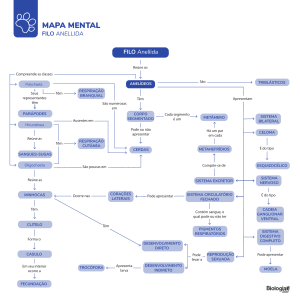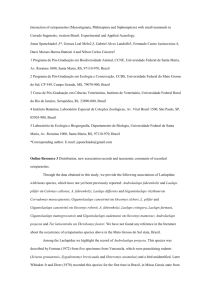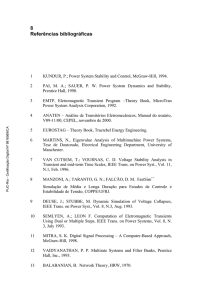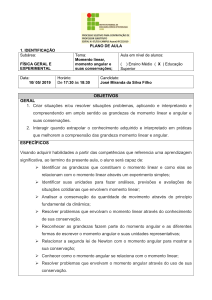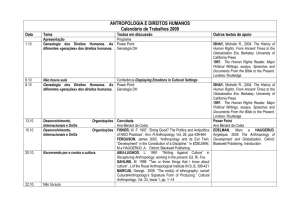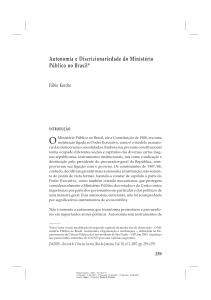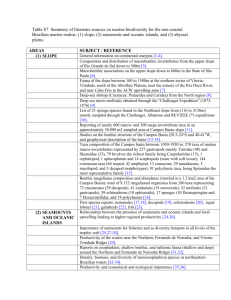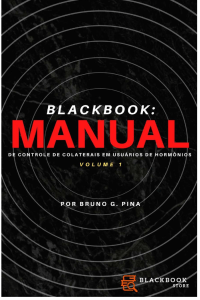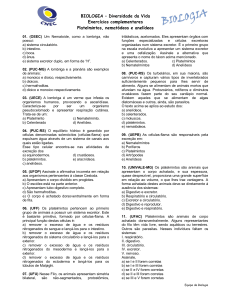pdf em inglês - Associação Brasileira de Limnologia
advertisement
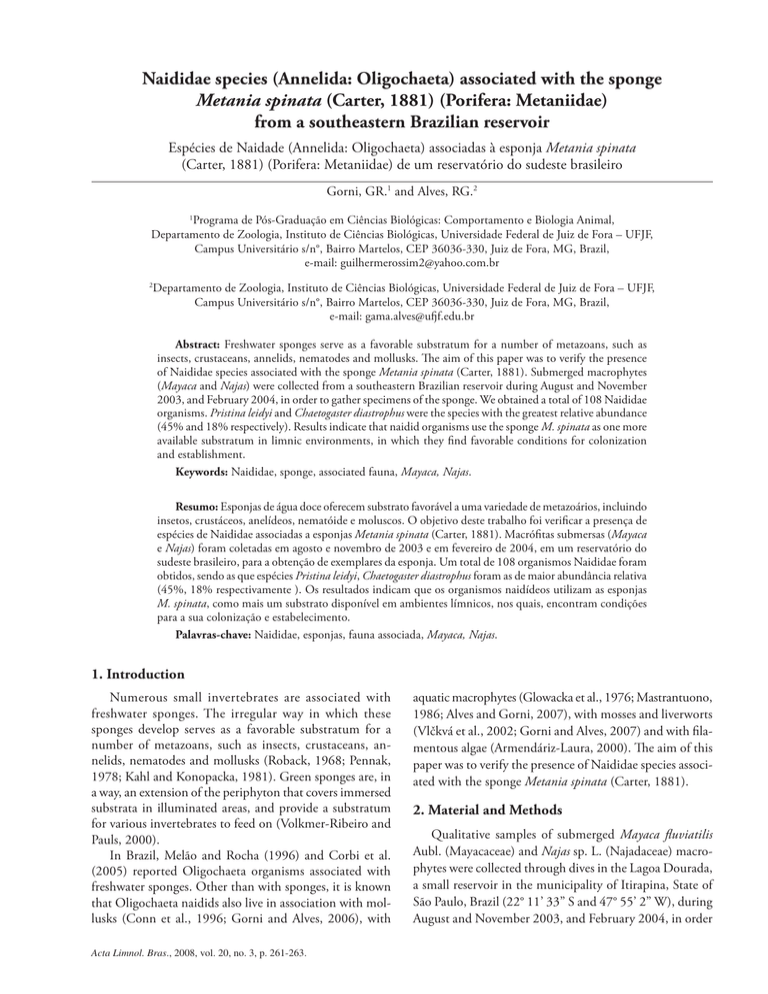
Naididae species (Annelida: Oligochaeta) associated with the sponge Metania spinata (Carter, 1881) (Porifera: Metaniidae) from a southeastern Brazilian reservoir Espécies de Naidade (Annelida: Oligochaeta) associadas à esponja Metania spinata (Carter, 1881) (Porifera: Metaniidae) de um reservatório do sudeste brasileiro Gorni, GR.1 and Alves, RG.2 Programa de Pós-Graduação em Ciências Biológicas: Comportamento e Biologia Animal, Departamento de Zoologia, Instituto de Ciências Biológicas, Universidade Federal de Juiz de Fora – UFJF, Campus Universitário s/n°, Bairro Martelos, CEP 36036-330, Juiz de Fora, MG, Brazil, e-mail: guilhermerossim2@yahoo.com.br 1 2 Departamento de Zoologia, Instituto de Ciências Biológicas, Universidade Federal de Juiz de Fora – UFJF, Campus Universitário s/n°, Bairro Martelos, CEP 36036-330, Juiz de Fora, MG, Brazil, e-mail: gama.alves@ufjf.edu.br Abstract: Freshwater sponges serve as a favorable substratum for a number of metazoans, such as insects, crustaceans, annelids, nematodes and mollusks. The aim of this paper was to verify the presence of Naididae species associated with the sponge Metania spinata (Carter, 1881). Submerged macrophytes (Mayaca and Najas) were collected from a southeastern Brazilian reservoir during August and November 2003, and February 2004, in order to gather specimens of the sponge. We obtained a total of 108 Naididae organisms. Pristina leidyi and Chaetogaster diastrophus were the species with the greatest relative abundance (45% and 18% respectively). Results indicate that naidid organisms use the sponge M. spinata as one more available substratum in limnic environments, in which they find favorable conditions for colonization and establishment. Keywords: Naididae, sponge, associated fauna, Mayaca, Najas. Resumo: Esponjas de água doce oferecem substrato favorável a uma variedade de metazoários, incluindo insetos, crustáceos, anelídeos, nematóide e moluscos. O objetivo deste trabalho foi verificar a presença de espécies de Naididae associadas a esponjas Metania spinata (Carter, 1881). Macrófitas submersas (Mayaca e Najas) foram coletadas em agosto e novembro de 2003 e em fevereiro de 2004, em um reservatório do sudeste brasileiro, para a obtenção de exemplares da esponja. Um total de 108 organismos Naididae foram obtidos, sendo as que espécies Pristina leidyi, Chaetogaster diastrophus foram as de maior abundância relativa (45%, 18% respectivamente ). Os resultados indicam que os organismos naidídeos utilizam as esponjas M. spinata, como mais um substrato disponível em ambientes límnicos, nos quais, encontram condições para a sua colonização e estabelecimento. Palavras-chave: Naididae, esponjas, fauna associada, Mayaca, Najas. 1. Introduction Numerous small invertebrates are associated with freshwater sponges. The irregular way in which these sponges develop serves as a favorable substratum for a number of metazoans, such as insects, crustaceans, annelids, nematodes and mollusks (Roback, 1968; Pennak, 1978; Kahl and Konopacka, 1981). Green sponges are, in a way, an extension of the periphyton that covers immersed substrata in illuminated areas, and provide a substratum for various invertebrates to feed on (Volkmer-Ribeiro and Pauls, 2000). In Brazil, Melão and Rocha (1996) and Corbi et al. (2005) reported Oligochaeta organisms associated with freshwater sponges. Other than with sponges, it is known that Oligochaeta naidids also live in association with mollusks (Conn et al., 1996; Gorni and Alves, 2006), with Acta Limnol. Bras., 2008, vol. 20, no. 3, p. 261-263. aquatic macrophytes (Glowacka et al., 1976; Mastrantuono, 1986; Alves and Gorni, 2007), with mosses and liverworts (Vlčkvá et al., 2002; Gorni and Alves, 2007) and with filamentous algae (Armendáriz-Laura, 2000). The aim of this paper was to verify the presence of Naididae species associated with the sponge Metania spinata (Carter, 1881). 2. Material and Methods Qualitative samples of submerged Mayaca fluviatilis Aubl. (Mayacaceae) and Najas sp. L. (Najadaceae) macrophytes were collected through dives in the Lagoa Dourada, a small reservoir in the municipality of Itirapina, State of São Paulo, Brazil (22° 11’ 33” S and 47° 55’ 2” W), during August and November 2003, and February 2004, in order 262 Gorni, GR. and Alves, RG. to obtain specimens of the sponge Metania spinata Carter, 1881. The Naididae species obtained from the dissection of the sponges under a stereoscope microscope were fixed in 4% formalin. We followed the taxonomic criteria adopted by Brinkhurst and Jamieson (1971), Righi (1984) and Brinkhurst and Marchese (1989) in order to identify the Oligochaeta. The species identified were preserved in 70% alcohol. 3. Results and Discussion We found 105 Naididae organisms (14 different species) in the sponge fragments. Thirty organisms were found in August 2003, being Chaetogaster diastrophus Gruithuisen, 1828 the most abundant species. The other species were in smaller number (Table 1). Sixty-five organisms were found in the samples collected in November 2003. The most abundant species was Pristina leidyi Smith, 1896, followed by Dero (Aulophorus) costatus Marcus, 1944 (Table 1). Of the five species identified in February 2004, Allonais inaequalis Stephenson, 1911 was the most abundant (Table 1). Oligochaeta species that inhabit sponge colonies are not specific, nor are they strongly connected with the host organism (Kahl and Konopacka, 1981). Taking the two species with greater relative abundance as examples, Pristina leidyi (46.67%) have been found before in the sediment of aquatic environments in caves (Wetzel and Taylor, 2001) and lakes (Ohtaka and Nishino, 1999), in aquatic macrophyte (Strayer et al., 2003) and inhabiting bivalve mollusks (Darrigran et al., 1998), while Chaetogaster diastrophus (18.10%) have already been found on the back of Odonata larvae (Corbi et al., 2004), in sediments of lakes (Collado and Schmelz, 2001), and in salty water environments (Erséus et al., 1999). Of the species of Naididae which inhabit Spongilla lacustris (L., 1758) sponge colonies in the River Gac, in Poland (Kahl and Konopacka, 1981), only Chaetogaster diaphanus Gruithuisen, 1828 and Chaetogaster diastrophus Gruithuisen, 1828 were also present in our study’s samples of Metania spinata. Rota and Manconi (2004) recorded the presence of Enchytraeidae associated with the sponge Heterorotula from deep regions of the Lake Taupo, in New Zeland. The way in which these invertebrates associate with sponges seems to be varied. Trichoptera Leptoceridae larvae (Heiman and Knight, 1969) and Neuroptera Sisyridae larvae (Pennak, 1978) use the sponges as a source of food. The study of Volkmer-Ribeiro and De Rosa-Barbosa (1974) indicated a possibly harmonic association between the bivalve mollusk Sphaeriidae and the freshwater sponge. Sponges seem to provide a favorable habitat for the Oligochaeta, and are capable of offering shelter (mainly for small organisms, which is the case of most naidids) and food such as green algae and diatoms, as well as minute invertebrates (Kahl and Konopacka, 1981). Naididae may also be beneficial to sponges, which is the case of Chaetagaster spongillae Annandale 1906, which by means of its movements helps the liberation of many gemmules in dead or decadent colonies, contributing to the dispersion of sponges in freshwater environments (Annandale 1911 in Marcus 1943). Naidids probably use the sponge M. spinata as one more available substratum in limnic environments, in which they find favorable conditions for colonization and establishment. Table 1. Absolute and relative abundance of Naididae associated at Metania spinata. Taxa/Species July/2003 November/2003 February/2004 Total (%) Allonais inaequalis (Stephenson, 1911) 2 - 3 5 4,76 Chaetogaster diaphanus (Gruithuisen, 1828) 1 - - 1 0,95 Chaetogaster diastrophus (Gruithuisen, 1828) NAIDIDAE 19 - - 19 18,1 Dero (Aulophorus) costatus (Marcus, 1944) - 9 2 11 10,48 Dero (Dero) nivea Aiyer, 1929 - 4 2 6 5,71 Dero (Dero) obtusa d’Udekem, 1885 2 - - 2 1,9 Dero (Dero) raviensis (Stephenson, 1914) - - 1 1 0,95 Dero (Dero) sawayai Marcus, 1943 - 1 - 1 0,95 Nais communis Piguet, 1906 2 1 - 3 2,86 Pristina aequiseta Bourne, 1891 1 - - 1 0,95 Pristina biserrata Chen, 1940 1 1 - 2 1,9 Pristina leidyi Smith, 1896 - 47 2 49 46,67 Pristina macrochaeta Stephenson, 1931 1 - - 1 0,95 2,86 Pristina proboscidea Beddard, 1896 1 2 - 3 Total of organisms 30 65 10 105 - Total of taxa 9 8 5 - - Acta Limnol. Bras., 2008, vol. 20, no. 3, p. 261-263. Naididae species (Annelida: Oligochaeta) associated with the sponge Metania spinata... References ALVES, RG. and GORNI, GR. Naididae species (Oligochaeta) associated with submersed aquatic macrophytes in two reservoirs (São Paulo, Brazil). Acta Limnol. Brasiliensia, 2007, vol. 19, no. 4, p. 407-413. ARMENDÁRIZ-LAURA, C. Populations dynamics of Stylaria lacustris (Linnaeus, 1767) (Oligochaeta, Naididae) in Los Talas, Argentina. Hydrobiologia, 2000, vol. 438, no. 1-3, p. 217-226. BRINKHURST, RO. and JAMIESON, BGM. Aquatic Oligochaeta of the world. Toronto: University of Toronto Press, 1971; xi + 860 p. BRINKHURST, RO. and MARCHESE, MR. Guia para la indentificacion de Oligoquetos aquáticos continentales de Sud y Centroamerica. Santa Fé: Asociación de Ciencias Naturales del Litoral, 1989. 207 p. COLLADO R. and SCHMELZ, RM. Oligochaete Distribution Patterns in Two German Hardwater Lakes of Different Trophic State. Limnologica, 2001, vol. 31, p. 317-328. CONN, DB., RICCIARDI, A., BABAPULLE, MN., KLEIN, KA. and ROSEN, DA. Chaetogaster limnaei (Annelida: Oligochaeta) as a parasite of the zebra mussel Dreissena polymorpha, and the quagga mussel Dreissena bugensis (Mollusca: Bivalvia). Parasitology Research, 1996, vol. 82, n.1, p. 1-7. CORBI, JJ., JANCSO, MA., TRIVINHO-STRIXINO, S. and FRAGOSO, EN. Occurence of Oligochaeta living on larvae of Odonata from Ipeúna (São Paulo State, Brazil). Biota Neotrop., Home Page, 2004, vol. 4, no. 2, p. xx. CORBI, JJ., TRIVINHO-STRIXINO, S. and ALVES, RG. Records of oligochaetes infreshwater sponges, on bryozoarians and on colonial hydrozoans from Brazil. Braz. J. Biol. = Rev. Bras. Biol., 2005, vol. 65, no. 1, p. 187-188. DARRIGRAN, G., MARTIN, SM., GULLO, B. and ARMENDÁRIZ-LAURA, C. Macroinvertebrates associated with Limnoperna fortunei (Dunker, 1857) (Bivalvia, Mytilidae) in Río de la Plata, Argentina. Hydrobiologia, 1998, vol. 367, no. 1-3, p. 223-230. ERSÉUS, C., GRIMM, R., HEALY, B., LUNDBERG, S., ROTA, E. and TIMM, T. Clitellate diversity in Nationalstadsparken, an urban national park in Stockholm, Sweden. Hydrobiologia, 1999, vol. 406, no. 0, p. 101-110. GLOWACKA, I., SOSZKA, GJ. and SOSZKA, H. Invertebrates associated with Macrophytas. In PIECZYNSKA, E. (Ed.). Selected problems of lake littoral ecology. Warszawskiego: Widawnictwa Uniwersytetu Warszawskiego, 1976. 238 p. GORNI, GR. and ALVES, RG. Naididae (Annelida, Oligochaeta) associated with Pomacea bridgesii (Reeve) (Gastropoda, Ampullaridae). Rev Bras. Zool., 2006, vol. 23, no. 4, p. 1059‑1061. GORNI, GR. and ALVES, R. da G. Naididae (Annelida, Oligochaeta) associated with briophytes in Brotas, State of São Paulo, Brazil. Rev Bras. Zool, 2007, vol. 24, no. 2, p. 518-519. Acta Limnol. Bras., 2008, vol. 20, no. 3, p. 261-263. 263 HEIMAN, DR. and KNIGHT, AW. A North American Trichopteran larva feedes on freshwater Sponges (Trichoptera: Leptoceridae: Porifera: Spongillidae). Am. Midl. Nat., 1969, vol. 84, no. 1, p. 278-280. KAHL, K. and KONOPACKA, A. Oligochaeta inhabiting the colonies of the sponge Spongilla lacustris (L.) in the River Gac. Acta Hydrobiol., 1981, vol. 23, no.3, p. 243-249. MARCUS, E. Sobre Naididae do Brasil. Bol. Fac. Filos. Ciênc. Univ. S. Paulo, 1943, 247 p. MASTRANTUONO, L. Community structure of the zoobentos associated with submerged macrophytes in the eutrophic Lake Nemi (Central Italy). Boll. Zool., 1986, vol. 53, p. 41-47. MELÃO, MGG. and ROCHA, O. Macrofauna associada a Metania spinata (Cárter, 1881), Porifera, Metaniidae. Acta Limnol. Bras., 1996, vol. 8, p. 59-64. OHTAKA, A. and NISHINO, M. Studies on the aquatic oligochaete fauna in Lake Biwa, central Japan. II. Records and taxonomic remarks of nine species. Hydrobiologia, 1999, vol. 406, no.1, p. 33-47. PENNAK, RW. Fresh-water invertebrates of the United States. New York: Ronald Press, 1978. 803 p. RIGHI, G. Manual de identificação de invertebrados límnicos do Brasil. Brasília: CNPq/ Coordenação Editorial, 1984. 48 p. ROBACK, SS. Insects associated with the sponge Spongila fragilis in the Savannah River. Notulae Naturae , 1968, vol. w412, p. 1-10. ROTA, E. and MANCONI, R. Taxonomy and Ecology of Sponge-Associate Marionina spp. (Clitellata: Enchytraeidae) from the Horomatangi Geothermal system of Lake Taupo, New Zealand. International Revue of Hydrobiology, 2004, vol. 89, no. 1, p. 58-67. STRAYER, DL., LUTZ, C., MALCOM, MH., MUNGER K. and SHAW WH. Invertebrate communities associated with a native (Vallisneria americana) and an alien (Trapa natans) macrophyte in a large river. Freshw. Biol., 2003, vol. 48, no.11, p. 1938-1949. VOLMER-RIBEIRO, C. and DE ROSA-BARBOSA, RA. Freshwater sponge-mollusk association in Amazonian water. Amazoniana, 1974, vol. 2, p. 285-291. VOLMER-RIBEIRO, C. and PAULS, SM. Freshwater sponges (Porifera, Demospongiae) from Venezuela. Acta Biol. Venez., 2000, vol. 20 p. 1-28. VLČKVÁ, S., LINHART, J. and UVÍRA, V. Permanent and temporary meiofauna of an aquatic moss Fontinalis antipyretica Hedw. Acta Univ. Palacki. Olomuc., 2002, vol. 39/40, p. 131-140. WETZEL, MJ. and TAYLOR, SJ. First records of freshwater oligochaetes (Annelida, Clitellata) from caves in Illinois and Missouri, USA. Journal of Cave and Karst Studies, 2001, vol. 63, no. 3, p. 99-104. Received: 08 August 2008 Accepted: 23 October 2008
